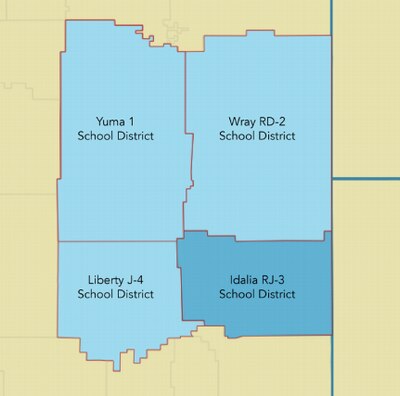A new national report on school districts that break away from larger districts criticizes Colorado for incentivizing that path in rural Yuma County.
While the report from the nonprofit EdBuild spotlights a number of districts nationwide that have seceded from larger urban districts to avoid racial and socioeconomic integration, the motivation in Yuma was getting more school funding for tiny rural communities.
In 2001, two school districts on the Eastern Plains — East Yuma and West Yuma — split into four smaller districts: Yuma, Wray and the much smaller Idalia and Liberty. Voters approved the splits in 2000. The idea was to secure more state funding by taking advantage of a new law, pushed through by the local state representative, that would give extra dollars to small districts created by boundary changes approved in that year’s election. (Normally, small districts created by such splits aren’t entitled to more state money.)

The plan worked, netting big per-pupil increases for Idalia, which has about 225 students, and Liberty, which has about 80. In the 2016-17 school year, Yuma and Wray received around $5,500 in state funding for each student while Idalia received about $10,000 and Liberty received about $9,100, according to the Colorado Department of Education.
An East Yuma school board member said before the split, “It would have been nice if [the state] could have provided funding without splitting us, but there was no other way.”
The 2000 Westword story that quoted the board member also described how at first the legislation allowing an exception for districts like those in Yuma County seemed destined to fail. Some lawmakers instead proposed that the Idalia and Liberty schools be closed. But testimony from a fifth-grade girl who’d have a longer bus ride if her Idalia school closed helped put the proposal back on track.
For the small communities that felt shortchanged when they were part of larger districts, the new law provided a major financial boost. But the authors of the EdBuild report argue that it was misguided state policy.
They say the Yuma splits created new duplicative bureaucracies and waste state taxpayers’ money.
By “rewarding small size, Colorado is incentivizing poor financial management, throwing good money after bad and dividing communities along the way,” write the authors.
The report, released Wednesday, is called, “Fractured: The Breakdown of America’s School Districts.”

